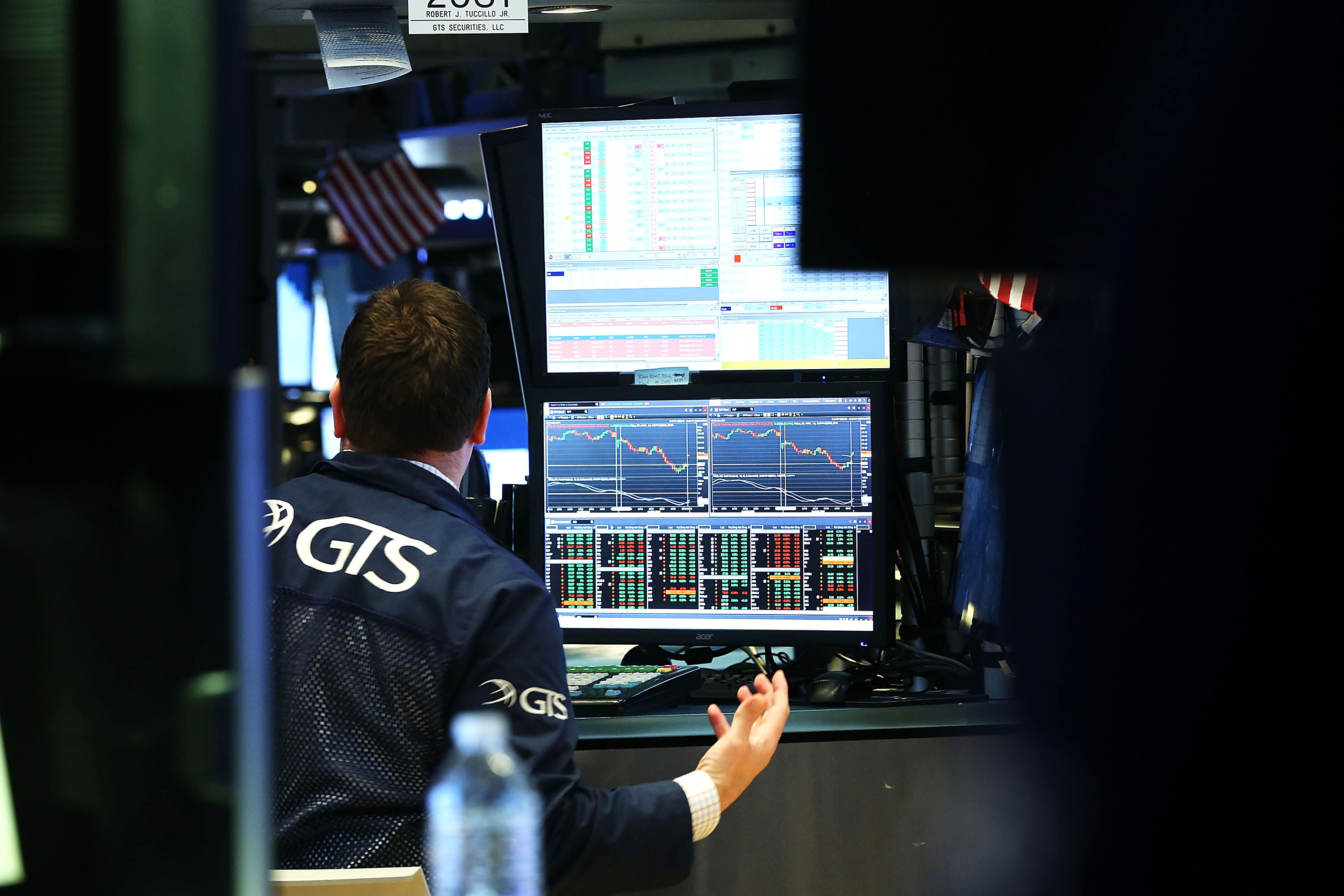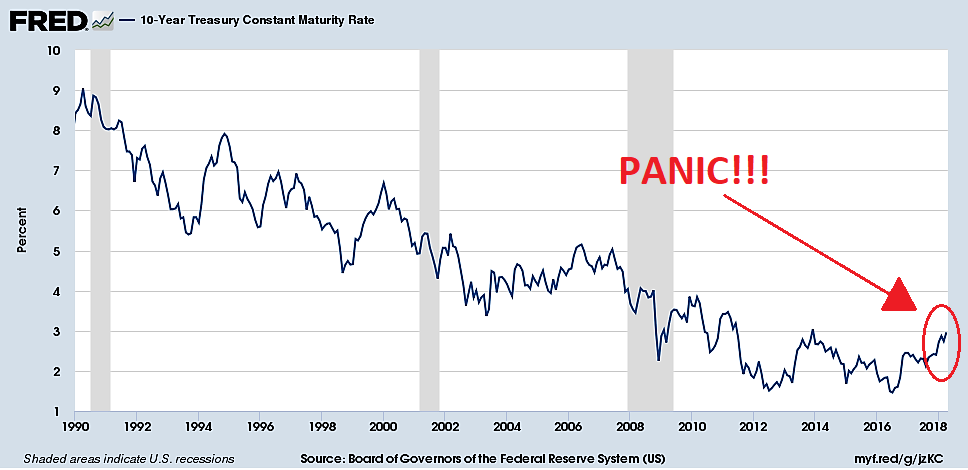Wall Street's ridiculous freakout over Treasuries
Treasury yields are rising and investors are panicking. This is fine.


The yield on 10-year U.S. Treasuries has hit 3 percent. The end is nigh.
When this threshold was crossed Tuesday, the financial world went into paroxysms. Headlines lit up, and the Dow Jones Industrial Average plunged as much as 600 points, before recovering to close down 424 points. "The 3 percent level is a big psychological point for investors and has gained huge focus," the head of equities at London and Capital told CNBC.
But if your own reaction was a mixture of "huh?" and "what?" don't worry: You're the reasonable one. Wall Street's freakout over this is completely uncalled for.
The Week
Escape your echo chamber. Get the facts behind the news, plus analysis from multiple perspectives.

Sign up for The Week's Free Newsletters
From our morning news briefing to a weekly Good News Newsletter, get the best of The Week delivered directly to your inbox.
From our morning news briefing to a weekly Good News Newsletter, get the best of The Week delivered directly to your inbox.
But first, let's back up. What's the yield on a 10-year Treasury anyway?
A Treasury is just a U.S. government bond: You buy it from the government in exchange for interest payments at a set rate over time, and then eventually the bond matures and the government pays you back the principal. Other investors can also buy the bond from you, and then they lay claim to the interest payments and the eventual principal repayment. Different types of bonds mature over various time spans, but the 10-Year Treasury is probably the most widely used in financial markets.
The yield itself is just the return an investor can expect from buying the bond. It's a function of the bond's price and its interest rate. Holding the price constant, the yield goes up when the interest rate goes up, and the yield goes down when the interest rate goes down. Holding the interest rate constant, the price operates inversely: As the price increases, the yield falls. As the price decreases, the yield rises.
A few things can push the yield up.
A free daily email with the biggest news stories of the day – and the best features from TheWeek.com
If the Federal Reserve is worried about inflation, for instance, it may dial up interest rates on borrowing throughout the economy. In that case, the government will need to offer a higher interest rate to keep attracting investors. Slowly but surely, the Fed has been doing just that.
Investors also look to government bonds as safe places to store their cash. But as the economy picks up, and more investment opportunities arise elsewhere, investors' demand for Treasuries falls relative to the supply. That drives the price down and the yield up. Demand could also fall relative to supply if the supply of bonds increases — like when the government decides it's going to ramp up its deficit spending. Which it recently did.
All of this has led to an uptick in Treasury yields.
Now, why is Wall Street's panic overblown?
To begin with, here's the 10-Year Treasury yield since 1990. The recent rise to 3 percent is that little twitch in the bottom right corner.

The last time 10-year Treasury yields were as high as 3 percent was all the way back in ... 2014. Prior to 2008, they were always above 3 percent. The economy has gone through plenty of periods of strong growth before, with bond yields and interest rates in general significantly higher than they are now. The financial industry, and certainly the financial media, seems to just perpetually forget that the economy existed and functioned just fine prior to whatever conditions held over the last few years. Hence the latest panic.
Like I said, rising Treasury yields could also signal rising inflation. That could make investors nervous. But also consider the baseline that inflation would be rising from. We haven't even been able to hit the Fed's 2 percent target, much less exceed it, in years.
A third issue that could be worrying investors is the debt. If the supply of bonds is outpacing demand, does that mean the U.S. government could run out of lenders? Except many people forget the federal government controls the currency and can create all the money it wants to meet its debt obligations. The price of its bonds may fluctuate, but it will never run out of buyers or suffer a debt crisis.
Finally, while the economy can certainly operate at higher interest rates, the other concern could be the Fed: that it will hike interest rates too fast, before the economy is strong enough to shoulder them. Of course, that isn't a fear about economic conditions so much as a fear the Fed will make a bad policy choice. But while I think the Fed is hiking too fast already, it's not going wildly overboard. And its reactions to incoming inflation data seem pretty sober.
But there's one other factor worth mentioning as well.
The post-2008 period was something of a sweet spot for Wall Street. The economy has been sluggish, meaning inflation and interest rates have been low. Yet at the same time, business profits have been exceedingly large. That's a weird combination that textbook economics says isn't supposed to happen. A sluggish economy should deliver poor profits. But high profits combined with low interest rates and low inflation equals an absolute bonanza for the financial industry. And the upward trajectory of Treasury yields may signal the bonanza is coming to an end.
Of course, this same state of affairs has also been terrible for everyone else. It's likely been driven by rising monopoly power, the failure to properly regulate Wall Street, and government austerity and tight money, among other things. All that's led to an inadequate jobs supply, disempowered workers, and stagnant wages — and allowed Wall Street to extract extra profits from the rest of the economy.
In which case, maybe Wall Street is right to panic that its party could soon end. But everyone else should be celebrating.
Jeff Spross was the economics and business correspondent at TheWeek.com. He was previously a reporter at ThinkProgress.



